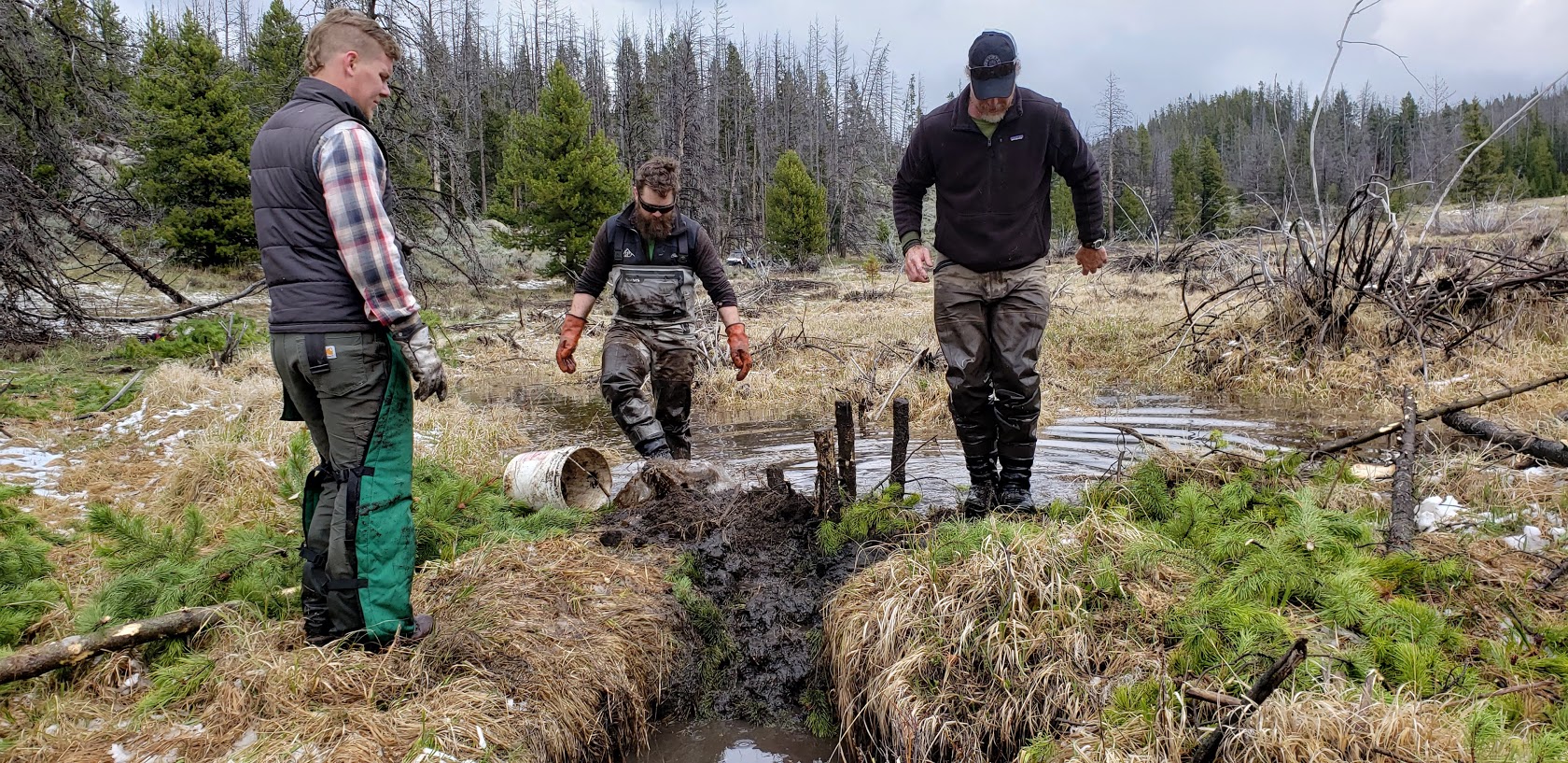Being Beaver: A Look at How Beaver Mimicry Helps Store Water
Last week, Montana Watershed Coordination Council’s communications fellow, Rosie Costain, joined in on a project to increase natural water storage in the Big Hole Watershed. Rosie tells a bit more about the experience:
When Ben LaPorte, program manager for the Big Hole Watershed Committee (BHWC) and one of the people involved in a restoration project along the East Fork of Divide Creek, calls the night before heading to the project site to say, “We really thought about cancelling this,” one might not look forward to the work that must be done. Blowing snow and cold temperatures accompanied him that day on his trip up to the mountain meadows we would be working in the next morning. The forecast wasn’t expected to improve.
Ben followed up his somewhat dismal report with, “But it’s now or never,” — a response fit for someone in the mindset of a beaver. As a part of a project to increase natural water storage, the BHWC joined with the Beaverhead-Deerlodge National Forest to patch historic beaver dams along the East Fork of Divide Creek. As they were looking for some extra volunteers, I had the opportunity to join them for a day.
When a beaver is around, its dams create a series of ponds and wetlands that hold water throughout the year. This prevents spring snowmelt from rushing down the mountain, flooding areas downstream, and can contribute to groundwater storage, along with other benefits.
The critters that originally constructed the series of dams that exist in the mountain meadows along this portion of Divide Creek left decades ago. BHWC Executive Director Pedro Marques says elk moving into the area and eating the willows may have contributed to the beavers’ departure. But the remnants of their dams, which now resemble little more than raised, grassy lines through the meadow, are still present.
After a 45-minute uphill hike up to the project site, with snow on the ground but none falling from the sky, I joined in some of the work.
Patching a dam has a few simple steps and requires a few more tools than a beaver would with it’s leatherman-like body. First, beaver-substitutes (in this case, Ben, Pedro, and four Forest Service employees) find a hole in one of the historic dams. Then, they use chainsaws to cut down conifers encroaching into the meadow, remove the limbs, and cut the trunk into sections, which are used as the base structures for patching. Using a post-pounder, the trunk sections are placed in a zig-zag pattern in the dam’s gap where the stream flows through. Workers weave the leftover limbs between the newly placed posts and dig up muck from the surrounding meadow to hold everything in place. (I was a muck gatherer — a slow one, but I feel my beginning-beaver status provided me with some leeway.) Someone stomps down each layer of limbs and mud until it is about even with the rest of the dam. Water still leaks through, but the stream’s flow is hindered.
One of the most fascinating parts of this work was the immediacy of the results. While carrying buckets of concrete-like mud and sod a few feet to the dam opening, the marshy ground became more pond-like with each trip. By the end of construction, water was already pooling up, slowing the stream’s journey down the mountain. Water gauges will provide concrete data as to how much water is retained and about any changes to groundwater levels.
This project is similar to one just downstream on the Morris Ranch. Instead of patching old dams, this project included building new structures (or beaver dam analogs). MWCC’s Watershed Fund provided support to the BHWC project in installing these beaver mimicry structures along the privately-owned section of the creek.
The Morris Ranch project will be included in MWCC’s upcoming Missouri Headwaters Watershed Tour. Find out more here.
The Watershed Fund provides direct support to community-based Watershed partners for on-the ground projects on private lands, capacity-building, and professional development.


